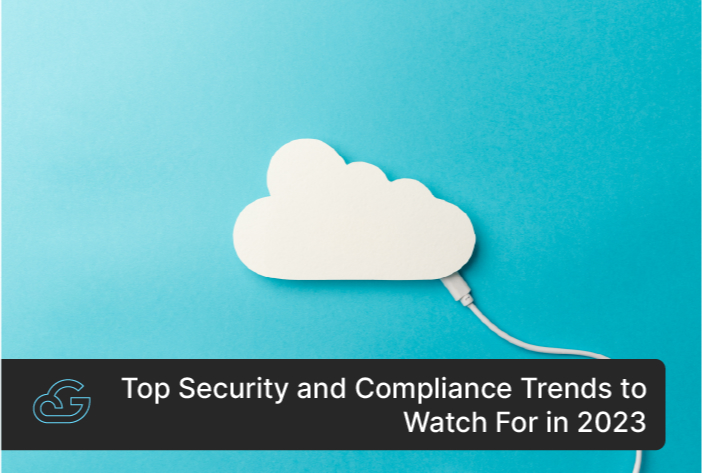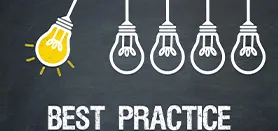Blogs / Security and Compliances
Top Security and Compliance Trends to Watch For in 2023
By
Siju Vincent
Posted: March 22, 2023
• 4 Min Read
The shift to cloud-based platforms has been a game-changer for businesses in terms of the manifold benefit it brings in such as efficiency, scalability, and cost savings. Despite these advantages, they also introduce new risks and complexities, particularly with regard to ensuring security and compliance. As the cloud technology continues to evolve to meet up the emerging security and regulatory requirements, it's important for businesses like yours to understand the latest developments in this sphere. The trends we'll be discussing here are a combination of technological, operational, and regulatory factors that are likely to influence how your organization approaches cloud compliance in 2023.
Top Security And Compliance Trends
- Adoption of Security as a service (SECaaS)
- Rise of DevSecOps
- Security Enhancement with AI & ML
- Zero Trust Security
- Compliance Automation
- Security Skill Shortage
With the increasing complexity of cloud management, security will become critical for organizations to ensure the protection of their sensitive data and the continuity of operations. It is expected that more businesses will rely on SECaaS providers to safeguard and manage their cloud environments. These providers will offer various services, such as vulnerability management, threat detection, and response to enhance the security of their clients' cloud systems.
The SECaaS business model involves a service provider offering their security services to clients on a subscription basis, allowing them to integrate these services into their existing infrastructure. This approach is typically more cost-effective than organizations trying to provide the same level of security on their own, especially when considering the total cost of ownership.
Most organizations today claim to follow the DevOps methodology, but not all of them have adopted the DevSecOps approach, which stands for Development, Security, and Operations, which is a software development approach that integrates security into every stage of the software development lifecycle.
The rise of DevSecOps in 2023 is driven by a growing awareness of cybersecurity risks, compliance requirements, agile development, and the shortage of cybersecurity talent. As cybersecurity threats continue to evolve, they are embracing this approach to strengthen their security posture, especially against Supply chain attacks and Infrastructure as Code vulnerabilities. In addition, teams that have already implemented it are also leveraging new technologies and development approaches to expedite their digital transformation initiatives.
The significance of Artificial Intelligence (AI) and Machine Learning (ML) as instruments for detecting and responding to threats is growing rapidly. In 2023, we can expect to see an increased use of these technologies in security operations. These technologies can scrutinize large sets of data, detect patterns and abnormalities, and aid in spotting potential hazards. Additionally, they can automatically execute preventive measures to avoid or lessen the impact of these dangers. For example, AI and ML can be used to detect and respond to threats in real time, identify anomalies in network traffic, and automate security processes.
Zero trust security is indeed an approach that assumes no implicit trust and requires all users, devices, and applications to be verified before being granted access to sensitive data or systems. This approach can help organizations reduce their risk of cyber-attacks, such as Cryptojacking, Ransomware, insider threats, denial of service, and account takeover.
This year, there will be an increased focus on cloud security, and organizations are exploring various measures to strengthen their cloud security. For instance, Cloud Access Security Brokers (CASBs) can help organizations gain visibility and control over their cloud services' usage and enforce security policies. Encryption can be used to protect sensitive data, and multi-factor authentication can add an extra layer of security by requiring users to provide multiple forms of identification before accessing a system or application.
Compliance can be a time-consuming and expensive process for many organizations. This year can anticipate an increase in the adoption of compliance automation tools to streamline and simplify the compliance process for many organizations. With the increasing focus on regulatory compliance across different industries, organizations are expected to invest more in these tools to improve their compliance posture while reducing costs.
Public cloud providers, including AWS, now offer a wide range of compliance-related tools to automate compliance processes including AWS GuardDuty, AWS Config, AWS SecurityHub etc. By leveraging these tools, organizations can automate various compliance-related tasks, such as auditing, risk assessment, and policy management. This allows them to focus on higher-value activities and reduce the risk of errors and inconsistencies. Thereby allowing organizations to improve their ability to meet various regulatory requirements, such as GDPR, HIPAA, and PCI-DSS.
The job market for security professionals has witnessed a massive expansion these years, resulting in a shortage of skilled workers to meet current demands. Reports say ‘the available potential cyber security workforce isn’t keeping pace with the emerging demand’. In this scenario, security compliance teams need to enhance their efficiency by focusing on high-priority tasks, while leveraging technology to automate routine and labor-intensive activities.
The ongoing challenge of skill shortages in the field of cybersecurity can be effectively addressed through the implementation of automation tools. By automating tedious and repetitive tasks, organizations can streamline their processes and create a more unified approach to monitoring multiple cloud environments. With the ability to visualize potential security risks resulting from small configuration changes, enterprises can proactively define custom security policies and compliance rules tailored to their unique needs.
What’s Your Strategy
As your business prepares for the future, it's important to go beyond merely meeting compliance requirements and instead implement internal solutions that safeguard data and enhance processes. This could help you transform your cloud operations and position yourself to bolster security, foster collaboration and address the upcoming security and compliance challenges. To achieve these goals, seeking advice and guidance from the best cloud service provider is critical before creating a security and compliance strategy.
At Gsoft we provide the best security and compliance services, ensuring that your data remains protected and secure in our care. With robust security measures and strict adherence to applicable regulations, we help you seamlessly integrate security into every step of your cloud journey.


Get Know More About Our Services and Products
Reach to us if you have any queries on any of our products or Services.











